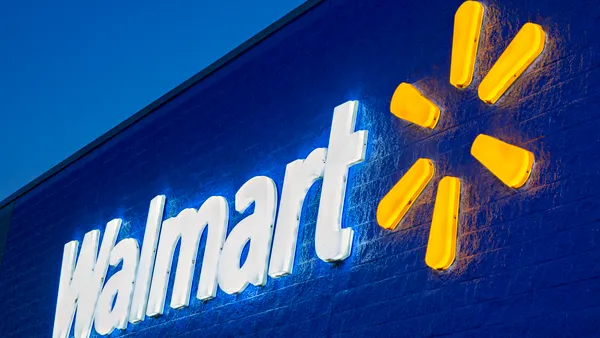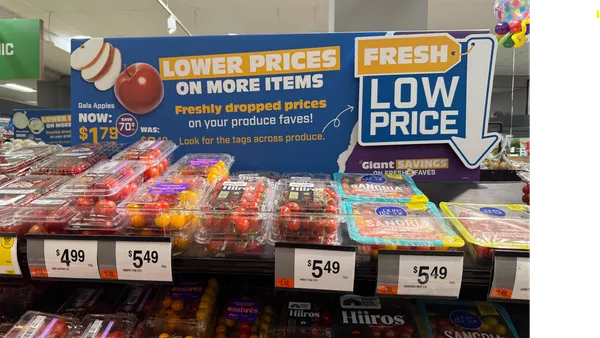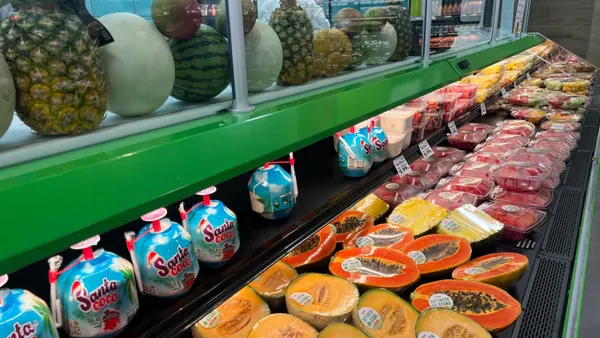Laura Heller is the director of external communications at Performics, the performance marketing agency of Publicis Media.
The organizers behind Groceryshop are a savvy bunch. They floated a grocery track at Shoptalk last March and based on the positive response, pulled together an entire three-day program in just six months. Approximately 2,200 attendees showed up in Las Vegas on Oct. 28 and risked missing their kids in Halloween costumes to learn more about where online grocery is headed and what tools are getting it there.
There were no earth-shattering announcements, and I can’t say anyone was stunned to discover that robotics were changing inventory and fulfillment in ways that make e-commerce more economical. But it was a breath of fresh air to be able to focus on the foundational changes happening in the grocery industry.
“This should not be surprising, [these changes] have been anticipated for over 25 years … It’s broadly acknowledged that the time has come,” Groceryshop founder and CEO Anil Aggarwal said during his opening remarks.
Here are a few of my top takeaways from the show.
1. Robots aren’t about the checkout
E-commerce is labor intensive and can practically erase grocers' already razor-thin margins. Robotics for retailers is less about the showy front-of-house technology that generates headlines in the consumer press about how checkouts will soon make human workers obsolete, and more about the backrooms, warehouses and fulfillment functions that are currently driving up operational costs.
Speakers from Albertsons (which announced plans for automated e-commerce fulfillment) Boxed Wholesale, Kroger and Ocado really drove this point home, and anyone who has the chance to view the presentations will catch an eye-opened glimpse of what is becoming possible with the help of some robots.
2. But autonomous retail is
Amazon was characteristically absent from Groceryshop – the retail giant seldom sends representatives or has speakers on any agenda – but Amazon Go was arguably the star of the show.
Autonomous shopping is the future, to hear some tell it. And it’s hard to say they’re wrong.
Amazon has seven Amazon Go stores and there are plans for 3,000 by 2021, according to Bloomberg. This may seem ambitious, but this is Amazon, which has a history of taking its time to test new concepts and then roll them out fast if they work. The technology is game changing and if Amazon is successful, will reset the bar across retail.
Autonomous retail won’t work for every store, or every part of the store. Amazon’s version is expensive and Go stores have thousands of cameras in the ceiling and on shelves. But there are solutions available today that utilize far fewer cameras — less than 30 in one case — and can provide a lot of bang for the buck, according to Michael Suswal, co-founder and COO of Standard Cognition.
Supermarkets have a higher degree of complexity than an Amazon Go store, with lots of small, similar items that are difficult to track with cameras. But there are likely limited use cases where the technology makes sense. Kiosks or grab-and-go areas near the front of the store with meal solutions or pre-ordered bakery items might make sense, and payments could be tied to a loyalty program.
3. Get some voice skills
Close to 20% of all mobile searches today are being done through voice-activated virtual assistants. Sure, precious few shoppers are actually making transactions, but there are lot more reasons to invest in voice than getting customers to convert.
Voice is a very nascent technology, as pointed out by Lara Antognoli, Google's director of shopping partnerships, during a presentation. But, she said, “We are advising retailers and brands to look at multimodal [technology]. Not just voice but how it transitions to screens,” she said, with a nod toward the proliferation of tablets with voice capabilities. “Smart displays will change how we interact in the kitchen.”
Recipes and instructional videos that can be called up through voice commands are already popular with consumers, though retailers have been slow to build skills, the technical term for a voice-related program that can be accessed by these digital assistants. Don’t think about voice in terms of smart speakers like the Echo — think about it in terms of ecosystems, advised Will Hall, chief creative officer at Rain. “To win in voice, we must think in ecosystems.”
Consumers are using the various platforms in different ways, according to research conducted by Performics and Northwestern University’s Intent Lab. Notable to retailers, however, is the fact that Amazon is the go-to program when someone is looking for reviews or to make a purchase. And when asked about what products they were likely to buy with a voice command, household items was No.1 (18%), followed by ordering meals (15%) and buying groceries (13%).
For CPGs, voice may be about brand building and problem solving, while grocers in particular will benefit from list-building skills, as Matt Kelleher, managing director at U.K. grocer Morrisons, explained. Already, Morrisons has found that voice is resonating with a higher-end customer who is now buying more and using the function two to three times a week.
4. Get lean
Curation was a big topic at Groceryshop. Offering an expanded assortment online seems like a good idea, but to customers the endless aisle too often just looks endless. Shoppers are counting on retailers to help pare down choices and it’s incumbent on grocers to do this online as well as in stores. It’s also one way to stand apart from Amazon.
Part and parcel of being lean means carrying an elevated selection of products. Offering premium private labels and partnering with an up-and-coming direct to consumer brand are both good ways to go. It’s time to redefine CPG as the lines blur with D2C, Boxed Wholesale CEO Chieh Huang advised during his keynote speech. It’s also one way to improve margins.
5. If you can’t build it, buy it
Groceryshop and its sister conference Shoptalk are really startup showcases. From the young companies in the expo hall to the opening day pitch session, retailers and brands looking for inspiration had plenty to choose from. It’s no coincidence that many conference sessions were mediated by investors and venture capitalists. Startups were everywhere at Groceryshop looking for funding or buyers. Not every retailer has the skills or wherewithal to create the solutions they need in house. It may be time to go shopping.
6. Personalization requires cold hard technology
Technology to grocers is primarily about machine learning and data right now, and for good reason. Presenter after presenter talked about using data to inform the product selection and services offered. But it’s also critical to strike a balance – to make machine learning do tasks that humans aren’t great at, and to then make sure that people are involved in the selection process, because to lose sight of the person, is to lose the customer.
E-commerce in grocery affords more personalization opportunities than the physical store, including curated product selections based on past purchases and customized messaging to reach them at various moments along the path to purchase. Technology in general, and data in particular, is helping take this to a new level.
“In the course of the day, we will be bombarded with thousands of different points of impact,” said Tim Lowe, president of Lowe’s Foods. “Small data will help us decipher where were are going to spend our time and money. Small data can tell you what your customers can’t.”
7. The experiential advantage
Grocers are the original experiential retail, adding pop ups, shops in shops and rotating displays. There’s no experience quite like what customers can find in a bakery or by sampling new foods. Supermarkets have what other retailers are looking for. Technology can help, but so much of retail has been, and will remain, a marriage of technology and old-school merchant skills. As Lowe pointed out, one way the retailer is engaging shoppers is with fun in-store events – like one that requires someone dressing up and entertaining shoppers as a giant dancing chicken.
Because even after three days of Groceryshop, start-up pitches, videos of automated fulfillment centers, retailers can still appreciate the entertainment value of a guy in a chicken suit.










